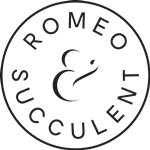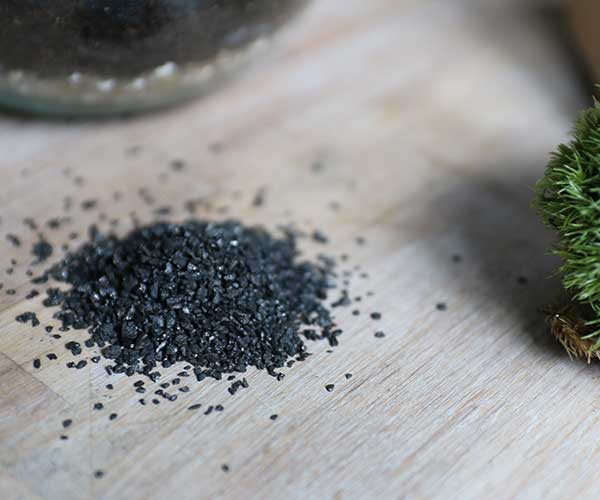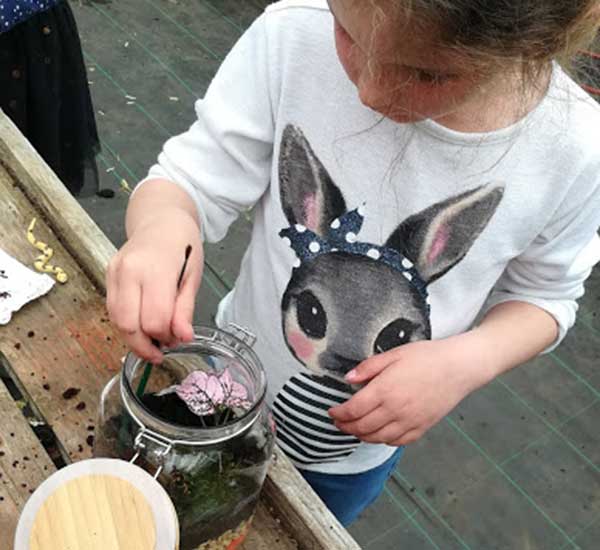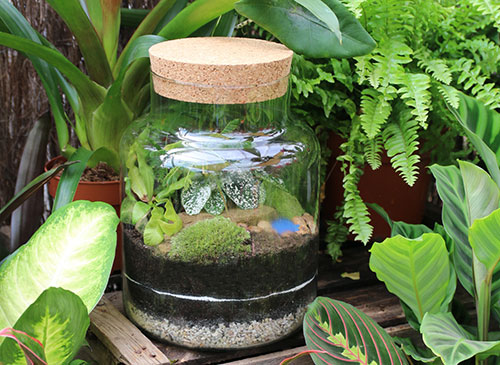
TERRARIUM ELEMENTS: Grit, Gravel & False Bottoms
Once you have chosen your vessel in which you would like to create a terrarium – it’s time to begin layering in the different elements to keep your plants inside happy (you may want to read ‘The Differences Between an Open Terrarium and Closed Terrarium’ before getting started, so you can be sure to choose the correct bits and pieces). The very first layer is grit, gravel or sand and is known as a false bottom. In this blog post I am going to explain what this is and what you can use to create your own…
The False Bottom

A closed terrarium clearly showing the false bottom created from white gravel at the bottom of the vessel.
What the hell is a false bottom, I hear you ask!? This is, simply put, the layer at the bottom of the vessel you are using to create your terrarium. It’s important because it allows any excess water to move away from the roots of the plants inside the terrarium, preventing root rot and keeping your plants healthy. Normal plant pots would have drainage, but the glass of a terrarium does not, so it’s up to the maker to add in this layer to act as drainage for the plants inside.
Gravel and Grit
Grit and gravel of various types are the best options for a closed terrarium.
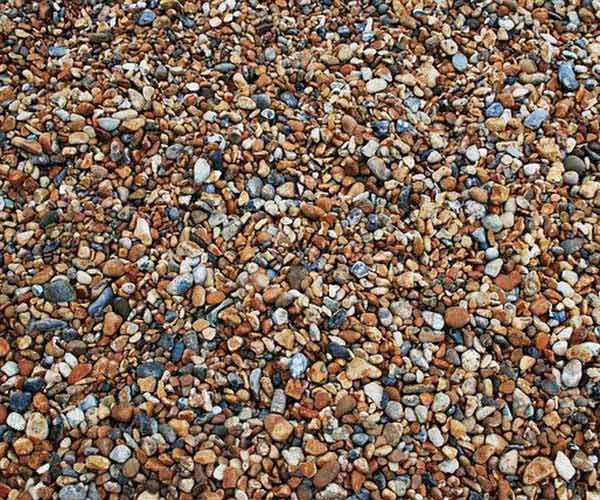
A small pea-shingle or gravel you would find on your drive way is perfect for this use, and provides ample drainage and is cheap to buy. Its small sized pieces can also be put through a funnel to create the layer in vessels with narrow necks such as demijohns. The only downside to this is the larger gaps between each piece is a trap for soil to fall though – however, if you read my Terrarium Soil blog, you can learn a trick to prevent this from happening.
A better but slightly pricier option is a finer grit, such as alpine grit which is popular with gardeners for rockery areas or for use on the top of potted plants. The individual pieces are much smaller, making the overall appearance of the terrarium neater and with less soil seeping into the gravel. It comes in a variety of colours which also help with the appearance.
- Alpine grit
- Coral sand
The luxury option for the ultimate terrarium is coral sand, which is super fine pieces of coral – smaller than alpine grit but larger than normal sand – in pure white. It’s tiny pieces and fine colouring look super smart as the false bottom in any terrarium.
Sand
For an open terrarium, most often containing cacti and succulents, good drainage is even more of a priority as these plants hate to be overwatered. Fine craft or play sand is ideal for the base of an open terrarium for this reason, as not only do succulents happily thrive in it, but it looks very delicate and is available in hundreds of colours.
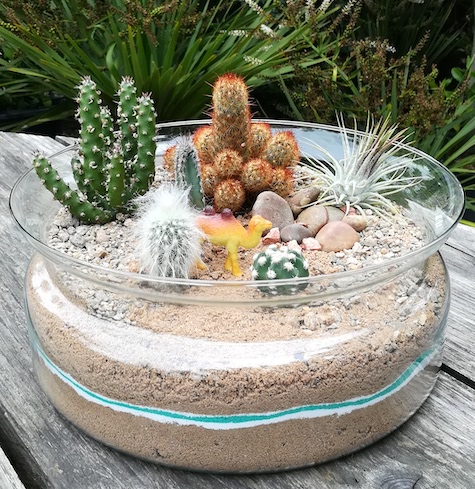
An open terrarium featuring cacti and layers of sand
Most of the time, cacti and succulents enjoy being sprayed or misted in order to obtain their water, however, when they do need to be fully watered, a good false bottom is essential for the health of the plants.
